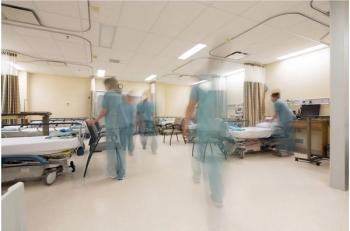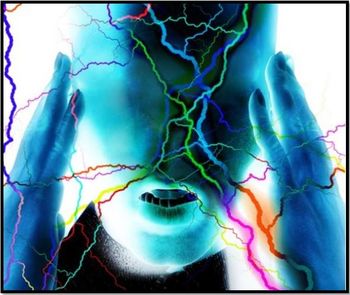
AHS: Magnetic Pulses Head Off Migraine Cascade
LOS ANGELES ? When applied during the aura phase of migraine, two pulses from an investigational transcranial magnetic stimulator reduced some symptoms in 69% of patients, according to a pilot study reported here.
LOS ANGELES, June 23 ? When applied during the aura phase of migraine, two pulses from an investigational transcranial magnetic stimulator reduced some symptoms in 69% of patients, according to a pilot study reported here.
When the device works, patients report significant improvement in symptoms, but the device failed to demonstrate pain efficacy compared with sham placebo (P=0.10), Yousef Mohammad, M.D., a neurologist at Ohio State University in Columbus said at the American Headache Society meeting.
The study recruited 42 patients, 37 of them women. The average age was 43 and the range was 19 to 67. The 23 participants were randomized to active stimulator treatment and 19 to sham treatment. All patients had a history of aura preceding at least 75% of migraine events and a headache frequency of one to seven attacks per month. Headache medicines included triptans or analgesics on an as needed basis.
The patients were told to report to the hospital when aura occurred and a device was placed on the back of the head. Two pulses or two sham pulses were given 30 seconds apart. The patients were asked to record responses over a 24-hour period following each treatment. During the three-month study, 50 migraine episodes were treated.
Among the findings:
- 69% of active treatment patients and 48% of placebo patients reported either no pain or mild pain two hours after treatment. (P=0.10).
- 42% of active treatment patients graded their response as very good or excellent versus 25% in the controls (P=0.05).
- At the two-hour assessment 84% of the active device patients said they had no noise sensitivity versus 17% of sham placebo patients (P=0.0002) and 64% reported no light sensitivity versus 22% (P=0.0064).
- More active treatment patients reported no nausea at two hours compared with placebo, but this was not significant (P=0.10), and 86% of the active treatment patients said they has improved work functioning at two hours versus 56%, but this also was not significant (P=0.07).
Dr. Mohammad said the results were encouraging and noted that the stimulator pulses are painless, with patients "only feeling a little pressure."
The pulse is created by a strong electric current which is passed through a metal coil to create an intense magnetic field for about one millisecond. The magnetic pulse, he explained, triggers an electric current in neurons and that current stops the migraine cascade before aura progresses to a painful headache.
The device, which is being developed by NeuraLieve, a Sunnyvale, California company, will be tested in a larger study, Dr. Mohammed said. NeuraLieve provided equipment and funding for the pilot study.
Newsletter
Enhance your clinical practice with the Patient Care newsletter, offering the latest evidence-based guidelines, diagnostic insights, and treatment strategies for primary care physicians.

























































































































































































































































































































